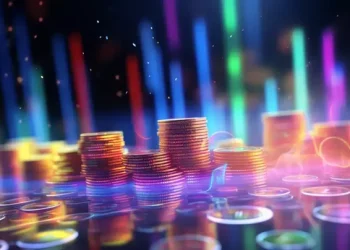Non-Fungible Tokens, or NFTs, made their debut in 2014, initially attracting a niche, tech-savvy audience. However, the NFT landscape underwent a transformation in 2021 when high-profile sales by artists like Beeple, the popularity of CryptoPunks, and the rise of the Bored Ape Yacht Club drew significant attention. The term “NFT” became ubiquitous, earning recognition as the Word of the Year by HarperCollins, a prominent dictionary publisher.
NFT trading volumes experienced substantial fluctuations during this period. Monthly NFT trading volumes surged to over $6 billion, with numerous buyers and sellers participating in transactions. Nevertheless, a market correction followed this peak, with a notable decline in transaction volumes, unique buyers, and sellers by the end of Q3 2022, as noted in a report by the World Economic Forum and Bain & Company.
Despite the market’s ups and downs, the report suggests that NFTs remain a relevant and promising technology. To shed light on the future of NFTs, the “Evolution of Non-Fungible Tokens” report delves into the intricacies of the NFT landscape, emphasizing primary opportunities and challenges. The conclusions of this report are based on insights from over 40 expert interviews, cross-industry working groups, and steering committee meetings, all aimed at identifying valuable use cases for NFT technology.
Defining NFTs and Their Use Cases
To comprehend the future of NFTs, it is essential to grasp their nature, dispel common misconceptions, and understand their functionality. The report defines NFTs as follows: “An NFT or non-fungible token is a unique digital asset stored on the blockchain that serves as proof of ownership or authenticity for a digital or physical item/right. Unlike fungible assets, NFTs are one-of-a-kind and cannot be replaced. They use blockchain technology to provide decentralized, secure, and transparent records of ownership and transfers.”
NFTs have found applications across various sectors and industries. Here are some of the potential use cases identified:
1. Collectibles: NFTs can represent both physical and digital collectibles, enabling the ownership and exchange of unique items.
2. Loyalty Programs: NFTs can be used to create and manage loyalty programs, offering customers unique rewards.
3. Secure Identity Credentials: NFTs can serve as secure digital identity credentials, enhancing privacy and security.
4. Gaming: NFTs have revolutionized the gaming industry by allowing gamers to own and trade in-game assets.
5. Art and Creatives: Artists and creators can tokenize their work, enabling unique digital ownership and royalties.
6. Real Estate: NFTs can represent real estate properties, simplifying property transactions.
7. Music and Entertainment: NFTs can offer musicians and entertainers new revenue streams and fan engagement opportunities.
8. Fashion: Fashion brands can use NFTs for limited-edition digital wearables and accessories.
9. Digital Goods: NFTs can represent various digital goods, including virtual items, videos, and more.
10. Sustainability and Impact: NFTs can be employed to promote sustainability initiatives and impact causes.
The lack of standardization in the NFT industry has been a major challenge, making it difficult for organizations and regulators to navigate the market. To address this issue, the report proposes the codification of use cases under these ten categories, providing greater certainty to all stakeholders.
The Future of NFTs
While NFTs have experienced significant volatility and speculative fervor, they hold the potential for substantial value creation. Organizations can utilize NFTs to forge innovative connections with consumers and build meaningful customer relationships. However, the recent market turbulence underscores the importance of integrating NFTs into existing operations and developing comprehensive strategies before launching NFT projects.
Additionally, governments and regulatory authorities play a crucial role in establishing policies and standards that safeguard investors and foster confidence in the NFT market. While NFTs may have initially gained attention through digital collectibles, their evolution shows promise across various industries and verticals. With the right checks and balances in place, the future of NFTs offers exciting prospects for all.
















